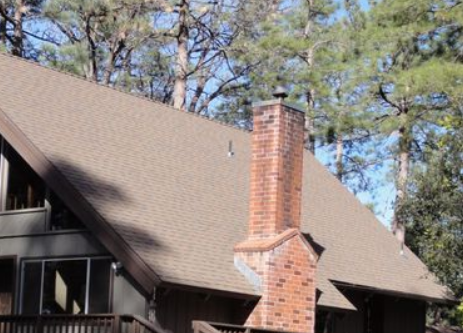
How to Spot and Prevent Chimney Leaks
Few things are nicer during the cold weather months than relaxing in front of a warm fire.
However, water leaking into your fireplace from undetected chimney leaks is a sure-fire way to ruin a cozy evening – and may even lead to serious water damage and encourage mold growth in your home.
At this point you may be asking, “How do I know if my chimney is leaking?”
Read on to learn the most common sources of chimney leaks and how to spot them before major damage sets in.
The flashing around the chimney is damaged or torn.
How to spot it: Chimney flashing is what surrounds the portion of the chimney that extends out of your roof, and it is usually made of a metal like aluminum.
Flashing directs water away from the joints between your roof and the chimney itself, keeping moisture from seeping into your home.
Look for large gaps between the bricks of the chimney and the flashing; you may even see signs of tar paper or other sealants in the gaps.
If you do find gaps, a chimney repair professional may be able to seal them for you.
There are cracks in the mortar joints between the bricks in the chimney.
How to spot it: This is a common cause of water leaking into your fireplace and can be easy to spot with a simple visual inspection.
Look for deep fissures or even missing sections of mortar along the interior of your chimney; these cracks allow water to fall inside the chimney itself and even into your house.
It’s also a good idea to have a Masonry Absorption Test done to see if your chimney needs professional waterproofing.
There is a crack in the chimney crown.
How to spot it: The crown is a slab of mortar or cement that rests flat on top of the chimney.
It is designed to protect the chimney and prevent rain or snow from entering the opening.
If you see signs of cracking, you may be able to apply a sealant yourself if the cracks are small.
If they are larger, you’ll need to get the crown repaired or replaced by a professional.
You don’t have a chimney cap or cover.
How to spot it: You’ll know just by looking if your chimney leaks are caused by a missing or damaged cover.
These are little metal caps, usually with screen walls and a peaked top that sits atop the chimney crown.
Without a cap, moisture from precipitation can get right into the chimney, along with leaves, birds’ nests, and other blockages that can lead to fireplace smoke in the house.
So, make sure you have an intact and well-fitting chimney cap installed at the top of your chimney.
As always, use caution when inspecting parts of your home on or around your roof and chimney.
If these areas are too difficult or dangerous to access, play it safe by hiring a professional inspection or repair service.
